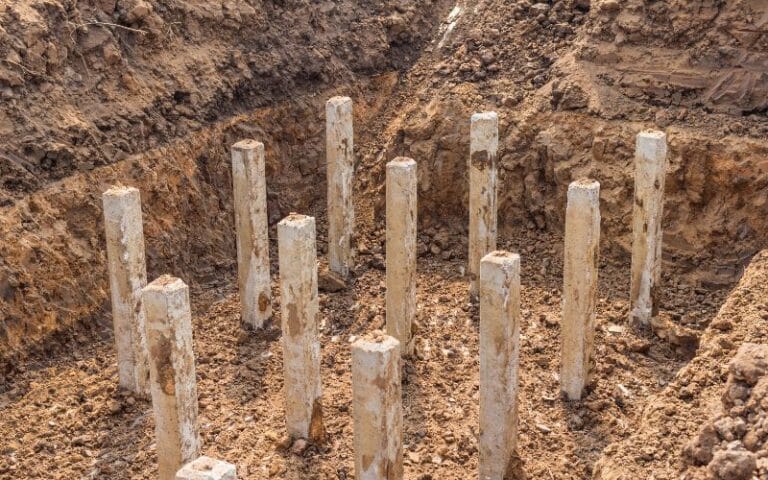Many prefer to use staples to secure their hardwood flooring. Staples make the subfloor stable due to their dual-point contact and gluey properties.
However, when renovating or repairing your hardwood flooring, you may have to remove the staples from the subfloor.
Luckily, removing staples from the subfloor is a straightforward process that may not require expertise. You’ll only need a few tools, such as pliers or a staple remover.
To remove staples from the subfloor, carefully hold the staple with the pliers. Then, steadily wiggle it back and forth to pull it out. Ensure you don’t ruin the subfloor while removing it. Repeat the motion and continue the work across the area until you satisfactorily remove all the staples.
This article will explain whether you should remove staples before an underlayment and show you effective ways to do it.
In this article, you will also find out how long it will take you to complete the task and the best tools to use.
Ready for a Flooring Quiz?
Do You Need To Remove Staples Before An Underlayment?

Yes, it would be best if you removed staples before an underlayment. Underlayment is a very important layer when installing subfloors.
It provides a smooth surface and is often a moisture barrier and soundproof. If you leave the staples there before an underlayment, it can affect the overall quality of the underlayment.
Staples left behind can make the underlayment to be uneven and consequently make the flooring unstable.
Aside from potentially damaging the flooring material, it can cause discomfort when walking on the floor.
Also, the staples left behind might rust as time passes. In this case, it can stain or damage the flooring material.
Moreover, they might interfere with the next layers, baseboard installations, or trim. Removing any staples, nails, or other obstructions as you prepare your subfloor is important.
It will help you install your subfloor without any hitches successfully. Your underlayment will be good for a well-finished, durable flooring surface.
It would help if you followed the manufacturer’s recommendations and industry best practices before you install your underlayment.
What Is The Best Way To Remove Staples From Subfloors?
Removing staples from the subfloor is straightforward, even though it can be tricky sometimes. Well, it all depends on how you go about it.
If you don’t want to damage your subflooring while removing these staples, follow the steps below.
Here is the best way to remove staples from the subfloor:
- Prepare the right tools, including an ideal staple remover, needle-nose pliers, flat-head screwdriver, etc.
- Remove any debris that might hinder the process from the area.
- Use your tools, for example, the needle-nose pliers, to grip the exposed parts of staples.
- Gently and steadily remove the staple. Don’t apply excessive force so you don’t damage the subfloor.
- Continue this process across the subfloor as you work to remove all the staples.
- Once you remove all staples, inspect the area to ensure no staples are left behind. Clean the subfloor to prepare it for further work.
5 Best Tools For Removing Staples From Subfloors
When removing staples from subfloors, many tools are available that can help you pull out the staples successfully.
However, choose the tool that suits your preference and the type of staples you’re dealing with on the subfloor.
Below are the five best tools for removing staples from subfloors.
#1. Staple Remover
A staple remover is the best tool if you need to remove staples from any surface.
It is a very efficient tool for doing the job. A typical staple removal resembles a snake’s mouth with two sharp front teeth.
These two sharp teeth help hover underneath the staples and carefully pull them out. Depending on the size of the staples, you might need a heavy-duty staple puller.
Before you start using the staple remover, clear any barriers that may be in the way. Clear your carpeting, maybe with a flat-head screwdriver.
You can find staple removers readily available at any store that sells things like that.
The table below contains the pros and cons of using a staple remove for removing staples from subfloors:
| Pros | Cons |
|---|---|
| It is designed for the task | May require additional tools for other tasks |
| It is efficient and precise | Limited staple removal |
| Minimizes damage | May require additional tools for other tasks |
| It reduces effort | |
| Has a user-friendly design |
#2. Standard Pliers
Standard pliers are another great tool to remove staples from your subfloor. They’re one basic tool that everyone should have in their toolkit.
When using this set of standard pliers, the staples need to jut out enough for the pliers to get a good grip underneath.
Standard pliers may not be thin enough to fit underneath if the staple presses too deeply into the wood.
While this may be true, you can proceed cautiously if the staple sticks out enough. Wear appropriate eye protection before attempting to remove the staple.
Remember to always put safety first when using tools.
To remove the staple, slide one jaw of the standard pliers underneath it until you can get a good grip on the metal.
Then, gently wiggle the staple until it comes out of the wood. If it is stuck, repeat the motion.
Although you can use standard pliers to remove most staples from wood, these pliers may not be useful for every application.
#3. Diagonal Pliers
Diagonal pliers can work very well for removing staples from the subfloor. These pliers are excellent for cutting wires, nails, and screws.
It’s good to know they can also function as staple removers. With diagonal fliers, you can pull out staples from a floor without ruining the surface.
They are easy to use; open them up and carefully slide one end underneath the exposed area of the staple. Push it until it’s firmly in place, and the bent end has a reliable grasp.
Shake it around until the staple comes up without using too much force. If you do it correctly, the task should be successful.
Watching your pulling with diagonal pliers would be best because their design is cutting. The staple could break if you apply too much power to it, so these cutters won’t work to remove it.
For the best results, take hold of the object firmly and move gently
#4. The Cat’s Paw Tool
Another effective method is the use of a cat’s paw tool. Using this tool is a great way to remove nails and carpet staples.
Just as it sounds, the cat’s paw tool is a short metal rod with two bent claws at its end.
You can place the forked end around the nail and rock it back and forth to remove nails. The nail finally comes out when you persistently do it.
While this may be true, it is not exactly so for staples. For carpet staples, tap the end of the tool under the staple area, then pull it gently upward to remove.
The cat’s paw tool is very useful in your home, even though it may require some practice before use.
#5. Needle-nose Pliers
The needle-nose pliers would be best to remove the tiniest staples from your subfloor.
However, when using this tool, be sure to wear safety goggles or sunglasses to protect your eyes from potential flying objects.
It is simple to use, and it’s preferable to hold it firmly in one. Now, gently insert the nose of the pliers beneath the staple and wiggle it around until the metal is loose.
Repeat this motion until you completely remove the staple from the wood. Needle-nose pliers may seem delicate, but they’re quite powerful.
How Long Will It Take To Remove Staples From A Subfloor?
On average, a moderately sized room might take 1 to 3 hours to remove staples from the subfloor conditions.
However, the time it takes to remove staples from a subfloor majorly depends on some factors. They include the size of the area, the density and type of staples, and how good you are with the tools.
In a similar view, calculate the time it takes to remove one staple and then figure out the entire area.
Remember that the more you practice using the tools, the better you become. If unsure, start with a small area and measure your speed.






